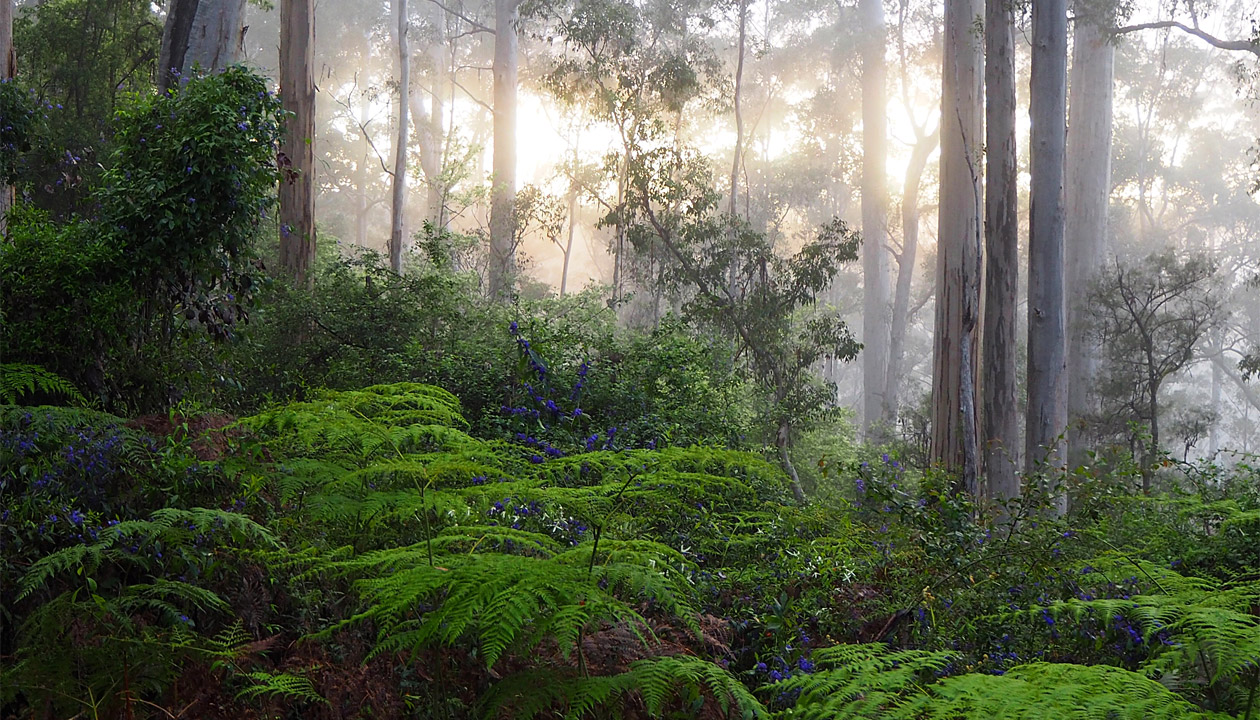Walk it for a day, or a month or more. The 1000km Bibbulmun Track offers a supportive way to immerse yourself in the incredible biodiversity of south-west WA.
Story Jill Griffiths Photo Janet Paterson
A rufous treecreeper hops up a jarrah tree, digging insects and grubs from under the stringy grey-brown bark. There are red-wing fairy-wrens nearby, noticeable by their chirruping long before the dull brown females come into view, flitting among the dense understorey. A male follows his harem, resplendent in brilliant blue with chestnut wings. Other than the sound of the birds and the breeze in the trees, the bush is silent.
“I love it out here,” says Dr Janet Paterson as she watches the birds. “Everything drops away. There is just the bush, the track, and the stuff in my pack. All there is to focus on is being here or getting to the next shelter. One foot in front of the other. Nothing else.”
Janet is on the Bibbulmun Track, a 1000km hiking track in Western Australia. It runs from Kalamunda in the Perth hills down to Albany on the southern coast. The track follows a meandering path up and down hills, over rocky outcrops and granite monoliths, across sandplains and wetlands. It begins in the jarrah forest, winds through karri forest, through giant tingle trees and across coastal heath, making its way through land managed by the state’s Department of Biodiversity, Conservation and Attractions. At one point, walkers cross the Irwin Inlet, placing their packs in a canoe and rowing across. Track etiquette dictates that if you take the last canoe from one side, you go back, once you have crossed, and take another canoe with you and leave it for the next person.
“I was worried about the inlet crossing the first time I walked the track,” Janet says. “But this time I’m looking forward to it.” Janet is on her second end-to-end hike along the Bibbulmun. She first did it eight years ago but has returned to do it again, this time to blog as The Walking Scientist, writing about the ecology and ancient geology of the track. “I’ve promised my husband that I will have gotten it out of my system after this,” she says, echoing a truth that Linda Daniels, executive director of the Bibbulmun Track Foundation states matter-of-factly: “The Bibb gets in your blood”.
This story excerpt is from Issue #128
Outback Magazine: Dec/Jan 2020










